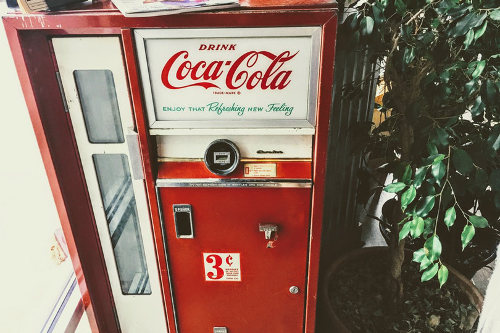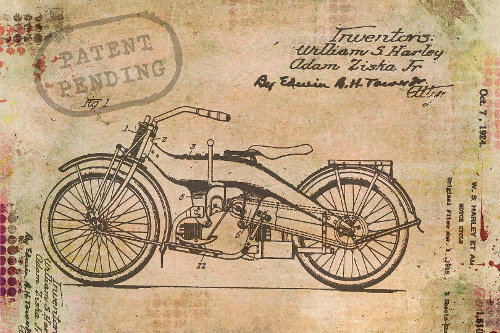Imagine setting up your business abroad, only to find six months later that somebody else is selling your product and you’re powerless to prevent it. Without protecting your intellectual property (IP) when trading overseas, a scenario like this could become a reality.
Preventing others from being able to copy and sell your inventions, product designs and ideas, or use your trademark is fundamental to the success of your business. If somebody else sells your ideas as their own, this can take away your market share, jeopardising your chances of growing in a new market, and damaging your reputation as a thought leader in the industry.
Most IP rights are territorial, so even if you have guaranteed your IP rights in your homeland, they generally won’t be protected in the other territories, Fortunately, there are methods you can take to protect your intellectual property when taking your business overseas; here’s how to safeguard your IP when trading abroad.

Apply for international patents to protect your inventions
A patent stops others making, selling or using an invention. If your business is based on an invention, you should already have a patent from your native country. If you want to take this invention to international markets, you’ll need to apply for new patents in these countries before doing so.
One way to do this is to file an individual patent in each of the countries where you plan to do business. However, this is only advisable if you are planning on expanding into a few countries, as each application will incur a separate charge, and take time and effort to complete.
If you are looking for protection in Europe, then it would be worth taking advantage of the European Patent Convention (EPC), as this can grant inventors patent protection in 30 countries across the EU. Although your application will only be processed once, it will extend to separate patents across different countries once it is granted. You may be able to apply for a European patent in your own country or directly through the European Patent Office (EPO); you can do this via the EPO website or by posting it to them directly. It is worth reading the full list of countries the EPC covers, as the countries where you wish to trade may not be protected by the convention.
If you are looking for protection outside of these 30 countries, or outside of the EU entirely, then your invention can be safeguarded through the Patent Cooperation Treaty (PCT). This covers 152 countries throughout the world. If you are based in Europe you can apply for an international patent through the EPO, but if not, the World Intellectual Property Organisation (WIPO) should be your first port of call.
A PCT application is initially sent as a single application, and the organisation processing it will conduct a patent search to see if a patent similar to yours has been registered elsewhere. As Global Voices discuss, patent searches can be time consuming, and this means your application will typically be published around 18 months from the earliest priority date. Despite this, they are an essential part of the application process. Once the application is completed you’ll then have to process it separately in each country you want to be protected in. If the countries you want to register patents in aren’t signed up to the PCT, you will have to apply to each nation separately.

Apply to use your trademark internationally
As well as protecting your invention, you’ll also want to ensure that nobody else can use your trademark. To protect your trademark outside of your homeland, you could apply to the trademark office of each individual country you want protection in. However, for the same reasons as for patents, this is only advisable if you need to use your trademark in a small number of countries.
There is no overarching European trademark protection, although it is possible to apply for a European Union Trade Mark (EUTM) through the European Union Intellectual Property Office (EUIPO) for exclusive use across EU countries. Anyone can file for a EUTM, but if you don’t have an office within the EU, you must appoint a fully qualified legal professional or expert in IP law to represent you before EUIPO. You can either apply on the EUIPO website or download an application from their site and send it to them.
If you are looking for protection outside of the EU, you can apply for international trademark protection in countries that have signed up to the ‘Madrid Protocol’ agreement, which is controlled by WIPO. In order to make an international application, you must have an existing trademark in one of WIPO’s member countries, and you should check whether the countries you need protection in have signed up to this agreement before making an application. You can either apply online or by downloading a postable application form from the WIPO website.
If you a have a registered EUTM or have applied for one, this can be used as a basis for an international trademark application. You will need to make this application through EUIPO. If the countries you want protection in aren’t signed up to the Madrid Protocol, you will have to apply to use your trademark in each separate nation.

Register your product design internationally
If you want to protect the appearance, physical shape, decoration and configuration of a product abroad, you will need to register its design internationally. Just like patents and trademarks, you can make separate applications to individual countries to protect your product design, but this will have the same pitfalls.
If you are seeking protection in EU countries and you are applying from within the Union, you may not have to register your product design at all, however. The Unregistered Community Design right allows those originating from all EU countries to have their designs automatically protected without needing to register them. This is as long as the design has been adequately disclosed, for example, through a printed review that bears a date, or mass publicity. If you do want to register your design in the EU, then you you can do so by applying for a Registered Community Design (RCD) through the EUIPO.
For international protection, look towards the Hague System for the International Registration of Industrial Designs. This will allow you to simultaneously apply for a design in multiple nations or territories through a single application. This is also sent to WIPO, either online or on paper. The Hague System covers only 67 territories, however, so if you want to protect yourself in countries not part of the system, you will have to apply to them individually.

photo credit: takomabibelot / Flickr
Check if your work is copyrighted
Copyright stops others from copying your work and distributing it. Most countries have signed up to international conventions aimed at upholding copyright protection in areas like original artistic work (such as photography) and original non-literary written work (such as software or database creation). Consequently, your copyright may be automatically safeguarded. These conventions include:
- Berne Convention for the Protection of Literary and Artistic Works
- World Intellectual Property Organisation (WIPO) Performances and Phonograms Treaty (WPPT)
- Agreement on Trade-Related Aspects of Intellectual Property Rights (TRIPS)
- Rome Convention for the Protection of Performers, Producers of Phonograms and Broadcasting Organisations
- WIPO Copyright Treaty (WCT)
The WIPO and the WTO (for TRIPS) has a list of countries that belong to the various conventions. If your country of origin is signed up to a convention and it is relevant to your area of business, then you won’t have to register your copyright abroad at all. You should look at whether your country is signed up to each of these conventions before you apply for copyright abroad. There are also a number of EU directives generally safeguarding IP and copyright that could help you if your business is based within the EU. A full list of directives can be found here.


